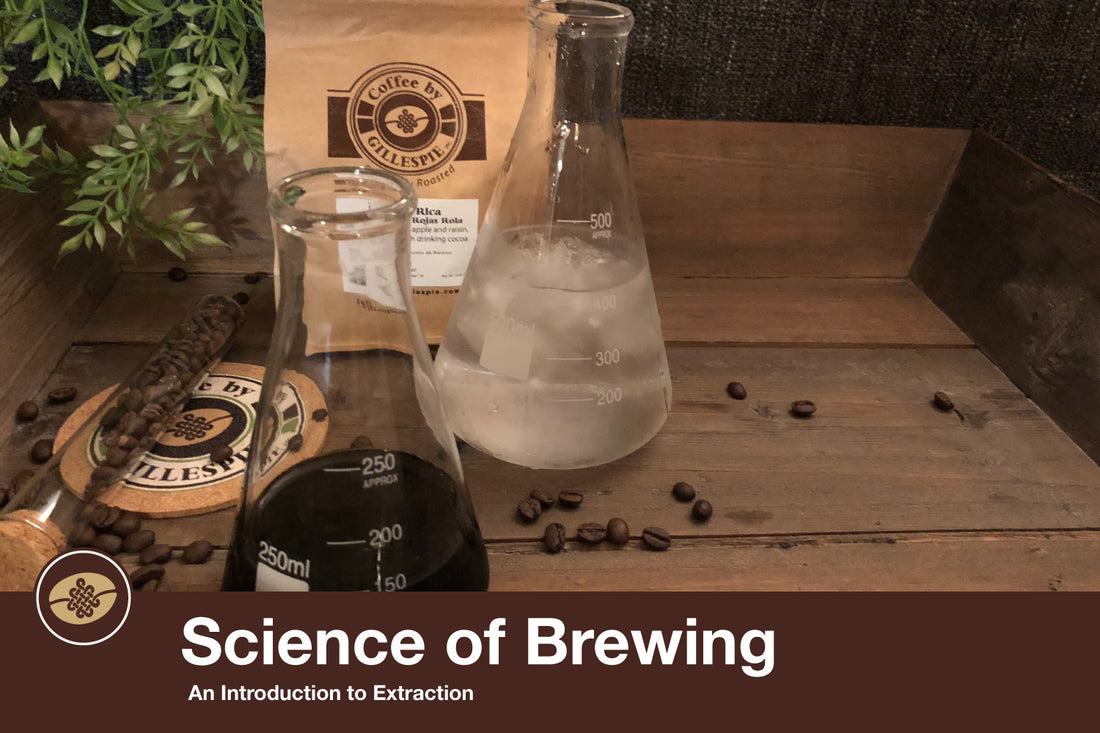You have received a bag of freshly and fearlessly roasted Coffee by Gillespie coffee beans. Now what? Where do you begin? Which brew method do you use to make that perfect cup of coffee? While there is not one correct method to make coffee, there is quite a bit of science behind what is going on in each of the various brew methods to create that perfectly balanced cup of joe.
Coffee extraction is the process by which water meets freshly ground coffee to pull from it all soluble material, creating your hot (or cold) morning coffee beverage.
Each brewing method uses different factors such as grind size, water temperature, water pressure, filters, and time to extract the ground coffee. All these factors determine how the soluble material in coffee is extracted and the rate at which it is extracted. Depending on the method, brewing a cup of coffee could take anywhere from a few minutes (Aeropress) to hours (cold brew).
Balancing particle size (or grind size), ratio of ground coffee to water, and filtration can produce a desirable flavor profile. Each of these factors come together and work with each other. For example; the particle size or grind size can change the rate at which the water flows through the filter and determines the amount of time coffee grounds are in contact with the water extracting the soluble material.
The flavor profile comes together as flavor molecules and fruity acids become soluble and join together. If you’ve ever had a bitter cup of coffee, most likely there was a hiccup in the extraction process. Over extracted or under extracted coffee can create an unpleasant taste such as bitterness or sourness. If it too much soluble material is extracted you may experience a sharp, bitter taste. But, if the coffee is under extracted, there may be a sour taste to your coffee.
In this series, we will look at all of these factors and various brew methods to learn the science behind brewing.


